Matt Knighton: Pushing Sailing Media to a New Level
Published on October 22nd, 2015
Matt Knighton, the onboard reporter for Abu Dhabi Ocean Racing when they won the 2014-15 Volvo Ocean Race, was himself the recipient of the Inmarsat Onboard Reporter (OBR) Award as the top correspondent for the race. That success now landed him a job with America’s Cup challenger SoftBank Team Japan. Scuttlebutt editor Craig Leweck checked in with Matt for an update.
What were you doing before the Volvo Ocean Race?
Before I applied for the Volvo I was producing videos for documentary and advertising clients as well as shooting with the US One Sailing Team on the World Match Racing Tour. I had been in the TV/film industry for 8 years and had also been racing big boats in Chicago and San Diego for 6 years with about 10,000 offshore miles under my belt. I knew I wanted to be an OBR even before the 2011-12 race and along with my video experience, started sharpening my photography skills several years prior to applying for the 2014-15 race.
What parts of that job came easy and what parts were hard?
Nothing is easy. I think for each OBR there were parts of the job that were more/less challenging than for others. We all had different strengths. For me, I didn’t have a problem with the physicality of the racing or the conditions. For me, the hardest part — which I truly underestimated — was the mental aspect.
The creativity to come up with new and fresh content every 24 hours is exhausting as well as being separated from my family. But if that was the hardest part, the best part was being a part of the team and the friendships built with the other guys onboard. Those are friendships forged in environments no one else will ever witness and that’s pretty cool.
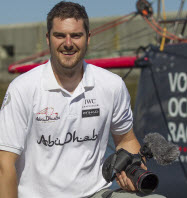 You won the top award… that must have been very gratifying.
You won the top award… that must have been very gratifying.
Yes, incredibly so. The level of competition was high amongst all the other OBR’s and I think we all recognized that. It could’ve been any one of us. I can remember going into the race with the idea, “I’ll do my best and leave nothing in the tank. If I can do that then whatever happens will happen in the end as far as the award goes.”
I knew if I did that then I’d be happy either way. I can remember being literally depressed in Cape Town after Leg 1 and seeing the quality of content from the other OBR’s and comparing myself! That pushed me competitively the rest of the race.
How does the crew impact the OBR job?
The crew you’re with can make or break you. I think that the first step to being a good OBR is developing trust with the rest of the team. If they see you taking your job as professionally as they do theirs, then it goes a long way. This ability to relate with the crew is, in my mind, the first quality to look for in future OBRs.
I can’t tell you how many times they came up with shots or helped me out with an idea I had during the race. Ian Walker was consistent with his support and awesome sound bytes…Phil Harmer always could come up with a joke…Justin Slattery dreamt up dozens of GoPro shots…Daryl Wislang fixed my camera gear more than twice…the list goes on and on. I was lucky to have such a great team.
What’s your favorite race story to tell?
The ones I can’t share publicly! Grab me for a beer and I’ll tell you.
Slattery’s Megalodon obsession was pretty legendary during Leg 3. Somehow during the Abu Dhabi stopover he had watched some Discovery Channel show about this 40 foot prehistoric shark that was still swimming in the oceans. He wouldn’t shut up about it the whole way to China! All we heard drifting around in the glassy waters of the Indian Ocean for three weeks were false Megalodon sightings.
I also won’t ever forget the night we set the 24-hour speed record. Hauling through the Southern Ocean towards Cape Horn, darkness was creeping in and even though my memory card had filled up I stayed on deck. It was an endless fire hose. I’ll never forget Ian laughing at the wheel saying we were now close enough to land to be rescued by helicopter so let’s push hard to set the record. It was surreal.
What’s it like for that kind of job, which is completely encompassing, to suddenly stop when the race ends?
It feels like you’re running and can’t stop. Even including the stopovers, you live life at such a high-pace during the race that it takes time to get settled back to normal. You definitely look at showers, home cooked meals, and sleep differently. I don’t think you can really explain it unless you go through it. There’s definitely a part of you that wants to be back on the boat. I’m still not fully adjusted and yes, I miss it.
And now the America’s Cup… how did that happen?
I hadn’t been home from the end of the race for more than a week when I got a message from Dean Barker. He asked if I wanted to come shoot with the team at the first America’s Cup World Series event in Portsmouth and things evolved from there. It was a question of taking a few months of vacation after the race or moving right into the next challenge. I couldn’t turn it down.
What is the plan for that job?
I’m working as communications director for the team so managing all our video, photo, press, and social content. It’s awesome to be able to keep creating, keep shooting onboard, and also have the opportunity to strategize with a new team. I love working with sponsors and athletes and doing something different than what’s been done before. Hopefully we’ll raise the bar and keep pushing sailing media to a new level — there’s so many possibilities. It’s an awesome team and Dean is a great leader. I’m lucky to have the chance to work with them.


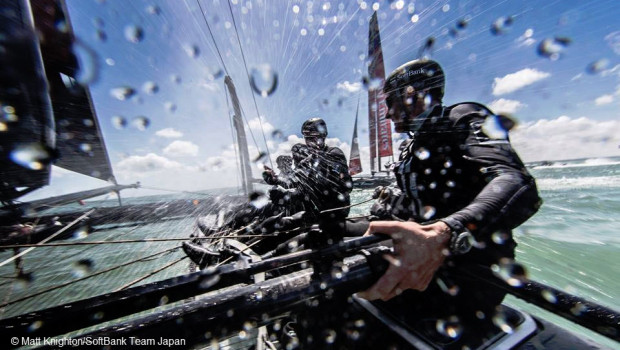

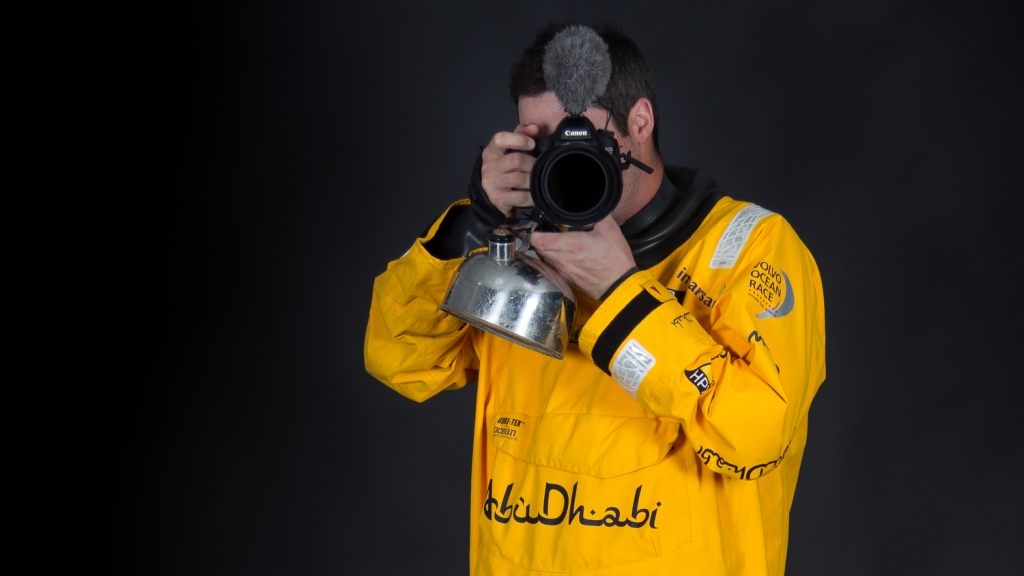



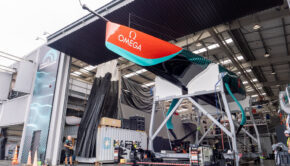
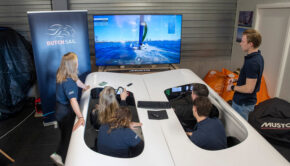
 We’ll keep your information safe.
We’ll keep your information safe.